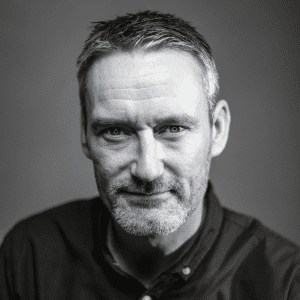BLOG
The Future of Work Demands a New Approach to Learning and Development
Our research shows that learning and development can slow the Great Resignation.
Much has been written about the new capabilities required for companies to thrive in the future of work. These needs add to the already significant demands on organizations to upskill their employees in the face of ongoing technological shifts related to digital transformation.
Prophet’s 2021 global research study “Fit for Change: Driving Growth and Transformation in the New Future of Work” showed that companies recognize the importance of equipping employees with the skills demanded by an ever-changing landscape. In our global survey, 81% of leaders noted that “our organization has increased investments in upskilling and reskilling our employees to thrive in the future of work.” Additionally, Fast Company recently reported that companies spent $165 billion on learning and development in 2020, yet 70% of employees say that they aren’t taught the skills needed to do their jobs.
“High-quality, relevant learning and development help reconnect employees to their organizations by creating visibility and access to the skills needed to succeed.”
So, how might organizations ensure that learning investments pay off in terms of achieving their business ambition and engaging and empowering employees? The answer: by taking an intentional, modern approach to designing, delivering and governing learning and development experiences that go beyond transactional training to continuous skills-building and growth.
Learning and Development is at a Tipping Point
Learning and development opportunities have increasingly been a key factor in employment decisions – and even more so now in this period of the Great Resignation of 2021. High-quality, relevant learning and development help reconnect employees to their organizations by creating visibility and access to the skills needed to succeed. It also allows employees to demonstrate commitment to long-term career paths.
Meeting the accelerated demand for modern skills development and relevant learning experiences has elevated the important role played by learning functions and departments. The time is now to ensure that employees receive real value through engaging learning and development content that can be applied and translated to day-to-day work and drive measurable business impact.
Four Steps To an Enhanced Learning Model
At Prophet, we’ve synthesized adult and transformative learning theory to develop our AR2 model for designing and delivering compelling learning and development experiences. The four steps of this model (Absorb-Recall-Apply-Reinforce) are designed to ensure learning experiences support both thinking (synthesis) and doing (application).

Below we walk through each of these four steps, to help you on your way to enabling transformation in the “Mind” of your organization:
1. Absorb
Initially, what is being communicated is still just information, not knowledge; the key is making the information something that the recipients will want to convert to knowledge. First, define clear learning objectives to ensure the information presented is targeted and relevant. Then, consider varying how recipients will consume the information to sustain engagement and stimulate different mental muscles. How might you deliver information in a way that requires recipients to alternately read, see, listen to and feel this content?
For example, Prophet worked with a large global appliance manufacturer, which needed to broadly upskill its marketing organization to enable digital transformation. We designed a full learning curriculum, in which one key module was focused on helping marketers truly understand and embrace their target consumer segments. The segmentation data was translated in a way that brought these consumers to life, versus treating them as data points on a page.
Also, an immersive exhibit allowed the marketers to “choose their own adventure” in terms of when and how they consumed information. Rich material within the exhibit included visuals that invited participants into the kitchens of these individuals and they were actively engaged through the use of an augmented reality app, which allowed them to hear the voice of the consumer first-hand through the unlocking of quotes and videos.
2. Recall
The Recall step is where learners “try” the content in preparation for its application in context. Studies show that every time a memory is retrieved, that memory becomes more accessible in the future. So, Recall focuses on retrieval and continual practice. Today’s virtual learning platforms offer plenty of functionality to find creative ways to aid recall. Real-time quizzes and visualization of results through tools like Mentimeter help drive instant engagement, while the breakout function offered within Zoom enables small groups to consider a thought-provoking question and how it links to what they’ve learned.
For example, with this global appliance manufacturer, our learning curriculum included designing two-week gamified online “Expeditions” around key topics related to digital transformation. After first absorbing the information, participants were engaged through quick quizzes, with points awarded for correct answers. Participants could also earn points and badges for posing questions, commenting and sharing related information, all ways of driving recall as well as a sense of community and competitive spirit.
3. Apply
Within the Apply step, learners must be guided to do something with the knowledge they’ve gained in the context of their job. Adult learning is most successful when knowledge is made clearly relevant to the learners and their lives. In fact, organizations can’t afford to not drive toward application within their learning and development programs.
The Apply step is where knowledge is connected to meeting key business objectives. Applying knowledge in a simulated and supported environment ensures individuals are equipped to apply this knowledge again when they’re faced with a similar situation in their day-to-day work. Tools such as templates, action plans and job aids (like checklists) both support and drive successful applications.
For example, a capstone of the learning curriculum for the global appliance manufacturer was a three-day summit for their top marketing leaders. Action planning often gets crammed into the final module of a session, but an “apply as we go” approach was taken instead. Time was carved out each day to iteratively build action plans, applying the knowledge gained each day to build and refine the thinking. Teams for action planning were carefully constructed to mirror typical working teams. This was, to ensure the action plan was relevant to real objectives, versus a theoretical learning exercise. Finally, the summit incorporated mechanisms to drive accountability, such as sharing action plans with peers and inviting feedback.
4. Reinforce
The fourth and final step is to Reinforce. This means both creating incentives to sustain new behaviors related to the knowledge gained, as well as developing long-term opportunities for reinforcement (to ensure knowledge is not forgotten over time). Simple incentives, such as social kudos or visible symbols (e.g., a custom notebook, with a checklist insert), are fun and effective. The most powerful incentives, however, are ultimately those that are incorporated into development objectives and performance management, to help embed the learning within day-to-day work and expectations.
For example, the learning curriculum for the global appliance manufacturer paved the way for a more expansive effort to transform and embed digital capability within the marketing function. The skills taught throughout the learning curriculum became core to job expectations for the company’s marketers and each marketer was expected to apply the knowledge gained to help the company evolve toward world-class, consumer-led marketing.
FINAL THOUGHTS
Relevant, compelling learning experiences – designed through approaches such as the AR2 model – are necessary to help companies make the leap in leveling up their workforces around critical new skills. Executed as part of a comprehensive learning and development curriculum, these learning experiences create greater employee capability, engagement and ownership in the new future of work.
If you’re looking to pursue an upskilling/reskilling agenda and want to understand how to adapt employees’ skills and roles to the future of work, then our Organization & Culture experts can help – get in touch today.





















